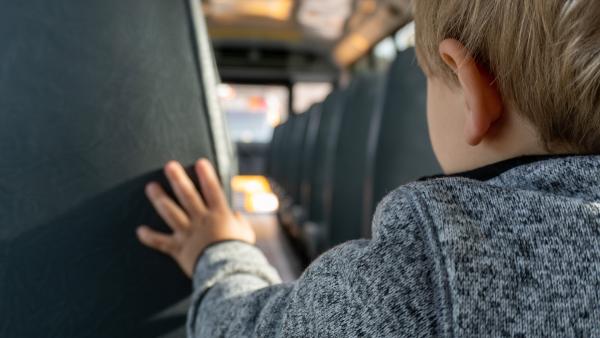The study published in the Journal of School Health reports the “transport experience” of an independent 1 to 12th-grade school in Virginia. Of the 1154 students continuing their “in-person” education, 462 students (40%) rode one of about 15 buses to school. Roughly half were grades 1 to 6, a third grades 7 to 9, the rest grades 10 to 12. This is their story.
Of course, the school had a mitigation strategy. Here are the salient features
- Parents were reminded every day to keep sick children home.
- There were no temperature or checklists before boarding the bus; temperatures were checked before entering the school.
- Students, bus drivers, and aides were expected to wear masks on the bus
- Buses had 11 to 13 rows, providing two double seats per row.
- Students were assigned seats, younger to the front. Seating was as distanced as possible, but in two-thirds of the cases, they were full – two to a seat, four in a row.
- The middle two and last two windows were opened 1” irrespective of the weather.
- Bus routes ranged from 36 to 74 minutes throughout the day
Students and staff were tested every other week initially and then weekly beginning in February 2021. A positive test resulted in immediate contact tracing “using the seating charts to trace exposures.” All close contacts, defined as seating within 6 feet for 15 minutes or more, were quarantined for two weeks and tested before returning to school – quarantine was reduced to 10 days as CDC guidance changed.
Seventy-nine students and 21 staff were identified as COVID positive over the seven months (September to March). Thirty-seven of the students and 2 of the staff were from the bus-riding population. All were sent home to isolate. An additional 52 students were identified as close contacts and quarantined – all were asymptomatic, and all tested negative for COVID-19. Contact tracing demonstrated
- No student to student transmission
- No student to adult transmission
- No adult to student transmission
- The source of COVID-19 was not bus transportation, even as community spread rose from 53 to 525 cases per 100,000.
Small study, not a great deal of information on risk factors and outcomes other than positive COVID tests. That said, this is empiric evidence that masks, minimal ventilation, and a fraction of distancing, roughly 2-3 feet, were reasonably protective. Add in some vaccinations for the older children, and I believe there is reason to put our children back on the buses. The researchers add their suggestions
- Assigned seats – it creates cohorts that simplify contact tracing
- “Create a culture that keeps children and staff from coming to school sick.”
- Universal masking while on the bus
The loss of one year of in-person school will have detrimental effects that ripple out for years, more than likely enhancing all-ready present disparities. Our children cannot afford another lost year; masks and assigned seats seem a simple tradeoff in getting them all back in school.
Source: COVID-19 Transmission during Transportation of 1st to 12th Grade Students: Experience of an Independent School in Virginia Journal of School Health DOI: 10.1111/josh.13058




